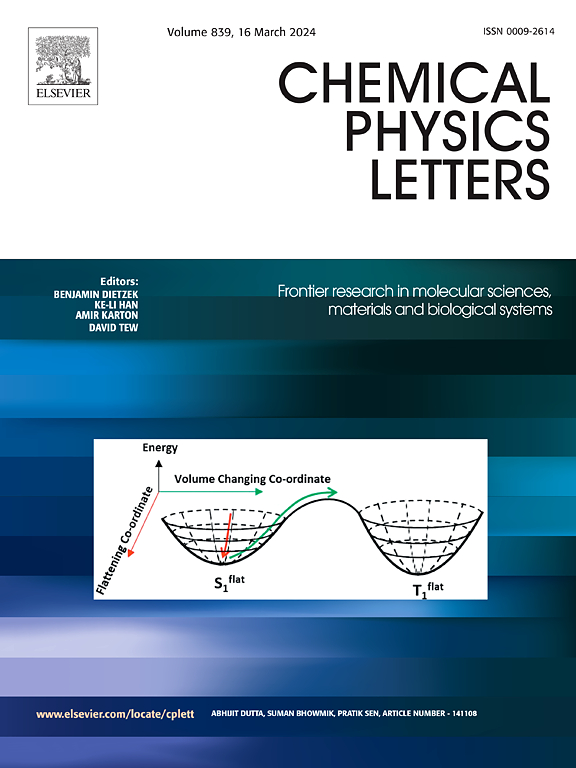Tungsten Tetraboride nanosheet as a potential gas adsorption material: A density functional theory (DFT) study
IF 2.8
3区 化学
Q3 CHEMISTRY, PHYSICAL
引用次数: 0
Abstract
The potential of Tungsten tetraboride (WB4) as a material for harmful gas detection has been explored using density functional theory (DFT). Adsorption and sensing properties of gases, including CO2, CO, H2S, SO, SO2, NH3, NO2, and NO, were systematically investigated. The electronic properties reveal that WB4 remains metallic upon adsorption of all gases. Successful adsorption is evidenced by negative adsorption energies ranging from −0.06 to −3.63 eV. Adsorption of NH3, SO, NO, CO, and H2S behaves as chemical behavior, while CO2, SO2, and NO2 show physical. Key analyses, including the density of states (DOS), band structure, adsorption properties, electron localization function (ELF), charge analysis, conductivity, work function, and recovery time, highlight the material's sensing potential. All gases demonstrated maximum conductivity and sensitivity due to the metallic nature of all the systems. WB4 also exhibited optimal recovery times for CO and H2S at 298 K. Molecular dynamics simulations further validated the system's robustness, showing stable temperature and energy profiles. These findings establish WB4 as a promising candidate for ambient gas sensing and scavenging applications.

作为潜在气体吸附材料的四硼化钨纳米片:密度泛函理论(DFT)研究
我们利用密度泛函理论(DFT)探索了四硼化钨(WB4)作为有害气体检测材料的潜力。系统研究了 CO2、CO、H2S、SO、SO2、NH3、NO2 和 NO 等气体的吸附和传感特性。电子特性表明,WB4 在吸附所有气体时都保持金属特性。吸附能为负值(-0.06 至 -3.63 eV),证明吸附成功。对 NH3、SO、NO、CO 和 H2S 的吸附表现为化学吸附,而对 CO2、SO2 和 NO2 的吸附则表现为物理吸附。包括状态密度 (DOS)、带状结构、吸附特性、电子局域函数 (ELF)、电荷分析、电导率、功函数和恢复时间在内的关键分析凸显了该材料的传感潜力。由于所有系统都具有金属特性,因此所有气体都表现出最大的传导性和灵敏度。分子动力学模拟进一步验证了该系统的稳健性,显示出稳定的温度和能量曲线。这些发现使 WB4 成为环境气体传感和清除应用的理想候选材料。
本文章由计算机程序翻译,如有差异,请以英文原文为准。
求助全文
约1分钟内获得全文
求助全文
来源期刊

Chemical Physics Letters
化学-物理:原子、分子和化学物理
CiteScore
5.70
自引率
3.60%
发文量
798
审稿时长
33 days
期刊介绍:
Chemical Physics Letters has an open access mirror journal, Chemical Physics Letters: X, sharing the same aims and scope, editorial team, submission system and rigorous peer review.
Chemical Physics Letters publishes brief reports on molecules, interfaces, condensed phases, nanomaterials and nanostructures, polymers, biomolecular systems, and energy conversion and storage.
Criteria for publication are quality, urgency and impact. Further, experimental results reported in the journal have direct relevance for theory, and theoretical developments or non-routine computations relate directly to experiment. Manuscripts must satisfy these criteria and should not be minor extensions of previous work.
 求助内容:
求助内容: 应助结果提醒方式:
应助结果提醒方式:


